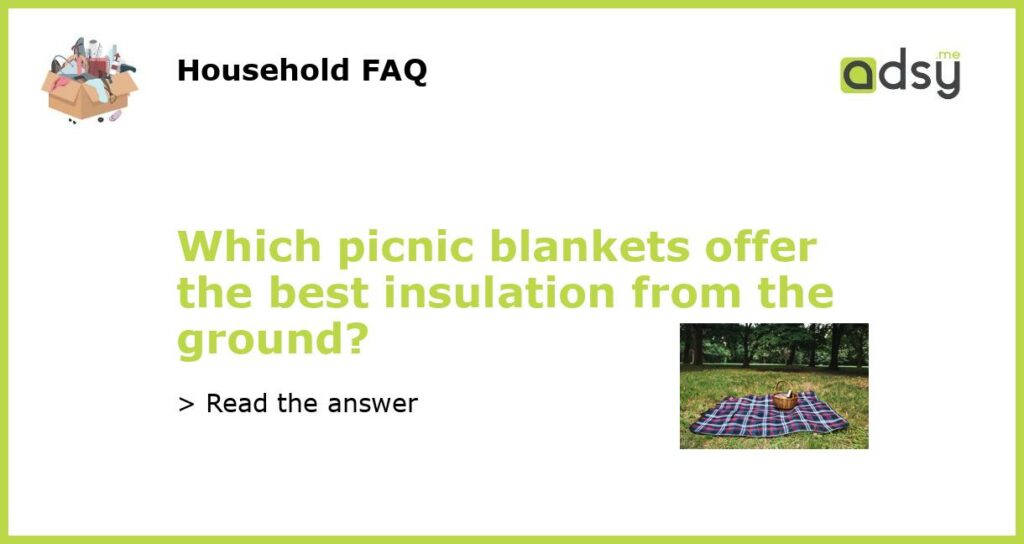Why insulation is important for picnic blankets
Insulation is an essential factor to consider when choosing a picnic blanket. It helps to keep you and your food warm, especially when sitting or lying on the ground. Without proper insulation, the cold ground can quickly steal away body heat, making your picnic experience uncomfortable. Additionally, insulation also protects your food from losing heat, ensuring that it stays at the desired temperature for longer. Therefore, investing in a picnic blanket with good insulation is crucial for a cozy and enjoyable outdoor dining experience.
Factors to consider when looking for insulation in picnic blankets
When searching for a picnic blanket with excellent insulation, there are several factors to consider:
- Material: The material used in the construction of the blanket plays a significant role in its insulation properties. Look for blankets made of materials such as fleece, wool, or synthetic fibers, as they tend to offer better insulation.
- Thickness: Thicker blankets typically provide better insulation as they create a larger barrier between you and the cold ground. However, keep in mind that thicker blankets may also be bulkier and less portable.
- Bottom layer: Some picnic blankets come with a waterproof or thermal layer on the bottom, which further enhances insulation by preventing moisture and cold from penetrating through.
Picnic blankets with excellent insulation
When it comes to picnic blankets with exceptional insulation, a few options stand out:
3.1 Wool blankets
Wool is a natural insulating material that provides excellent warmth, making it ideal for picnic blankets. It has the ability to regulate body temperature and retain heat, ensuring that you stay cozy even on chilly days. Wool blankets are also durable and resistant to moisture, making them suitable for outdoor use. Look for wool blankets with a tight weave for maximum insulation.
3.2 Fleece blankets
Fleece is another popular material for picnic blankets due to its insulation properties. It is lightweight, soft, and provides good warmth, even in colder conditions. Fleece blankets are also machine washable and quick-drying, making them easy to clean and maintain. Look for blankets with a thick fleece material for better insulation.
3.3 Insulated picnic blankets
Some picnic blankets are specifically designed with insulation in mind. These blankets often have multiple layers, with an insulating material sandwiched between an outer fabric and a waterproof or moisture-resistant bottom layer. The insulation layer can be made of materials like synthetic fibers or foam, providing additional warmth and comfort. Insulated picnic blankets are generally more expensive but offer superior insulation performance.
Considerations beyond insulation
While insulation is important, there are other factors to consider when choosing a picnic blanket:
- Size: Make sure to choose a picnic blanket that is large enough to accommodate everyone and everything comfortably.
- Portability: Consider the weight and foldability of the blanket, especially if you plan on carrying it to different picnic spots.
- Cleaning and maintenance: Check if the picnic blanket is machine washable or easy to clean in case of spills or stains.
- Durability: Look for a picnic blanket made from durable materials that can withstand outdoor conditions and frequent use.
Conclusion
When it comes to finding a picnic blanket with excellent insulation, options like wool blankets, fleece blankets, and insulated picnic blankets are worth considering. Along with insulation, remember to consider other factors like size, portability, cleaning, and durability to ensure you choose a picnic blanket that suits your needs. With the right picnic blanket, you can enjoy a cozy and comfortable outdoor dining experience, even on colder days.






